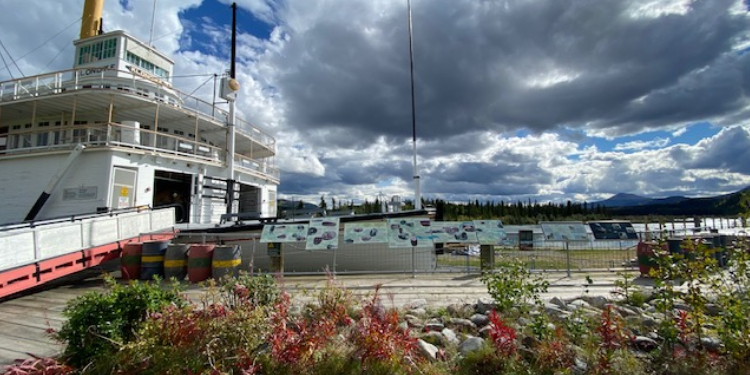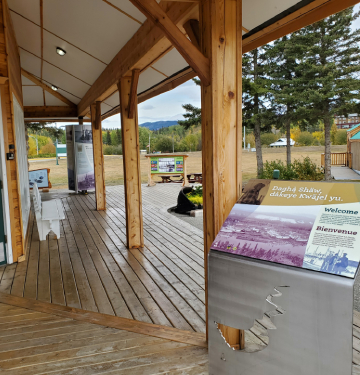
Added perspectives on a symbol of Yukon history
S.S. Klondike National Historic Site: a series of new interpretive panels developed in partnership with Ta’an Kwäch’än Council and Kwanlin Dün First Nation deepen its history.
An icon of Yukon history
Built in 1936-37, the S.S. Klondike sits majestically along the shoreline of the Yukon River in downtown Whitehorse. At 64 metres long—the length of 5 city buses—it is an impressive icon that is now almost 90 years old. One of Canada’s few remaining steam-powered paddle wheelersFootnote1, the Klondike is designated a national historic site to commemorate inland water transportation in the Yukon.
Indigenous people in the Yukon River basin have travelled to, across and down rivers for thousands of years.
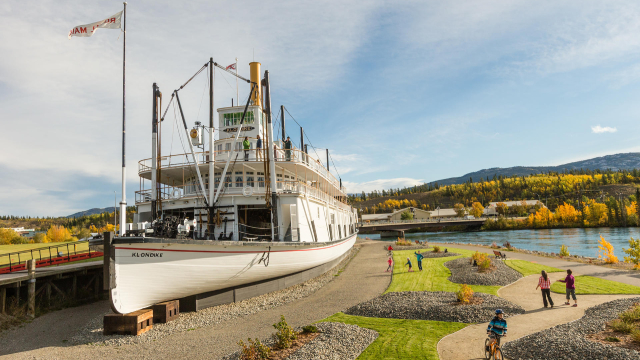
When paddle wheelers began operating on the Yukon River in the 1860s, they carried newcomers who arrived with different ways of life and increasingly imposed those ways on others. Across four generations, over 250 sternwheelers travelled the Yukon River and its tributaries. They changed the way people moved and lived in the Yukon. Their arrival opened the land to fur traders, missionaries, prospectors and government workers, and made intensive mining possible. Paddlewheelers also brought fresh food, supplies and news from afar, allowing large numbers of outsiders to settle and stay.
Indigenous communities were forced to adapt to those changes. They too began travelling on and working for the riverboats, and many First Nations families worked as woodcutters to fuel the boats.
Sharing a more inclusive story
For years, visitors to the S.S. Klondike learned about the history of the sternwheelers and their role in the development of the Yukon from a settler perspective.
A missing layer of history
Largely absent from site interpretation was the history and significance of the Yukon River to Indigenous peoples, the role they played in keeping the riverboats running and the impacts riverboats had on their lives.
Working together towards a broader understanding
In 2017, Parks Canada met with 9 First Nations whose traditional territories lie along old riverboat routes to discuss renewing exhibits at the S.S. Klondike. The core exhibit team included staff from Parks Canada, Ta’an Kwäch’än Council and Kwanlin Dün First Nation. Together, the team worked to research and broaden the history presented at the site. They co-hosted events at the boat where settler and First Nations speakers told stories about working and travelling on riverboats such as the S.S. Klondike, and how the shift from boats to highways changed life along the river.
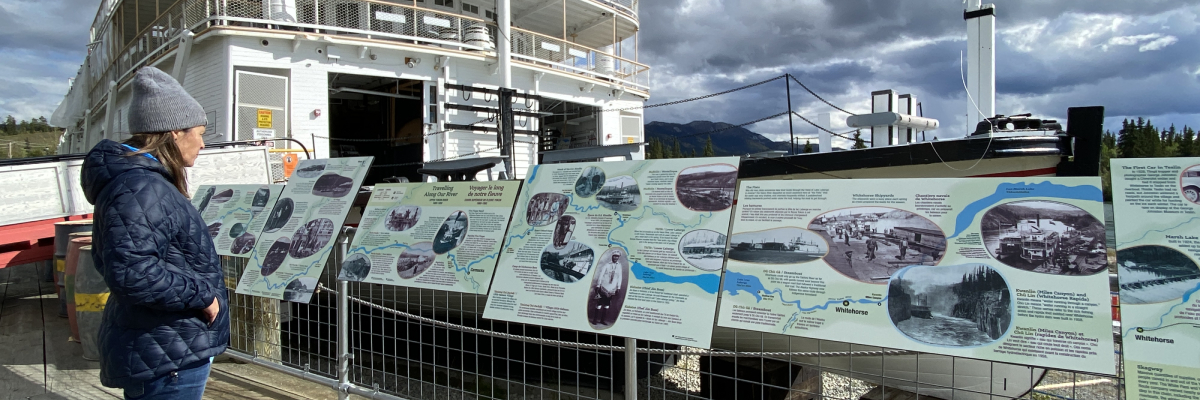
A fuller story of life along the river
New research, stories and photographs provided by First Nations citizens and community members were used to renew how the site is interpreted.
A new series of outdoor interpretive panels featuring audio and photographs now provide visitors with a fuller scope of Yukon history.
A new welcome panel acknowledges the traditional territories of Ta’an Kwäch’än Council and Kwanlin Dün First Nation and welcomes visitors in Dän K'è / Southern Tutchone. Panel maps include place names in Tlingit, Southern Tutchone, Northern Tutchone and Hän languages.
Two additional panels invite visitors to envision life at the site before the S.S. Klondike was moved there. First Nations families once came annually to catch and dry salmon along the riverbank. During and after the Klondike Gold Rush, newcomers displaced Indigenous people from many waterfront locations, including where the Klondike now sits. Those panels reflect on the resilience of First Nations communities, affirming that they never gave up their relationship to the river and continue to build connections for themselves and future generations.
Visitors also learn that not everyone had equal opportunities working on riverboats. Most higher-paying jobs went to white men, and only a few Indigenous men ever became riverboat officers. And although many First Nations people travelled on the S.S. Klondike by choice, the riverboats were also used to take children from their homes to residential schools hundreds of kilometres away. Many did not return home for years.
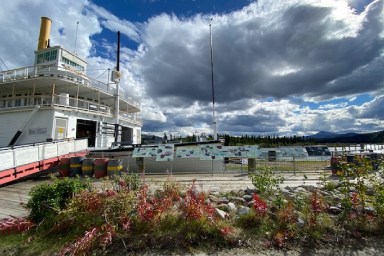
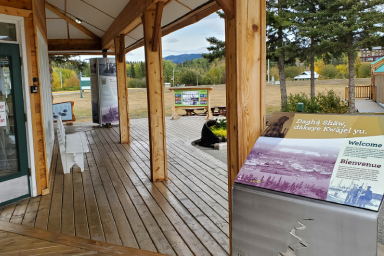
Throughout the exhibit, visitors are asked to reflect on how the river gives life to people, animals and the forest. They are invited to experience the Yukon River, find peace and gratitude, and to consider the importance of protecting waterways for future generations.
- Date modified :
